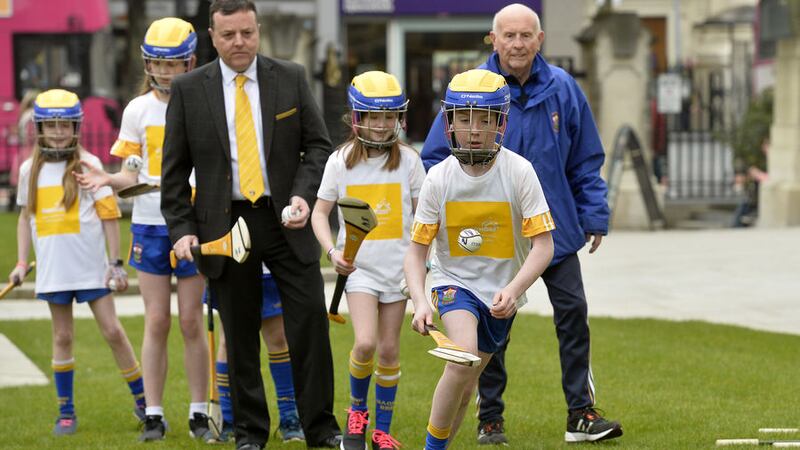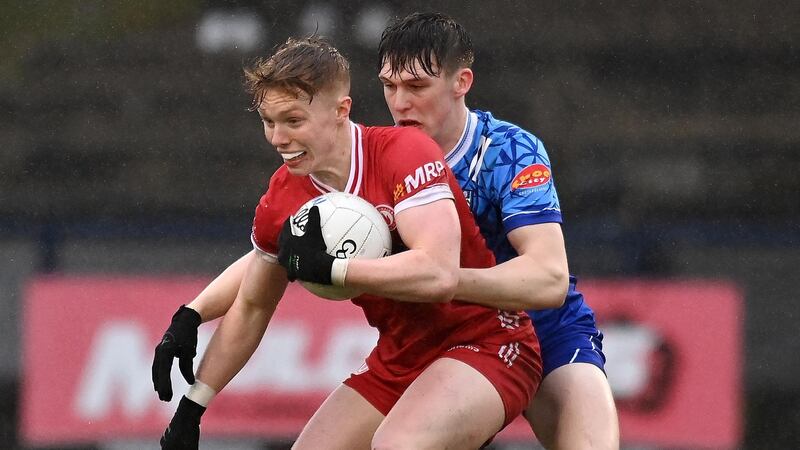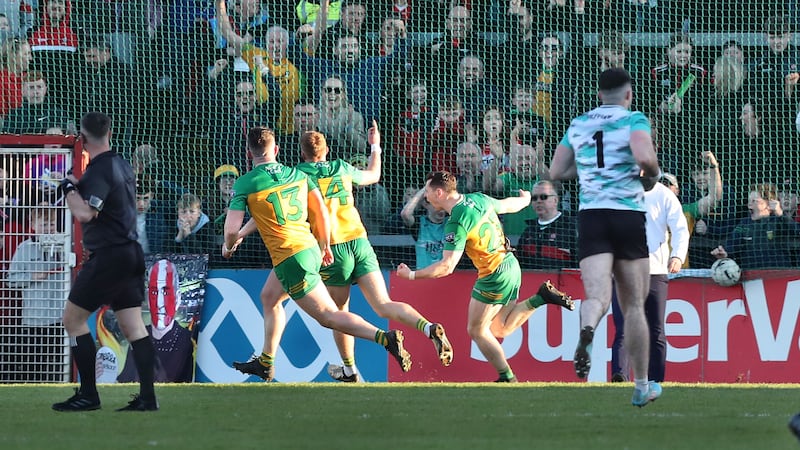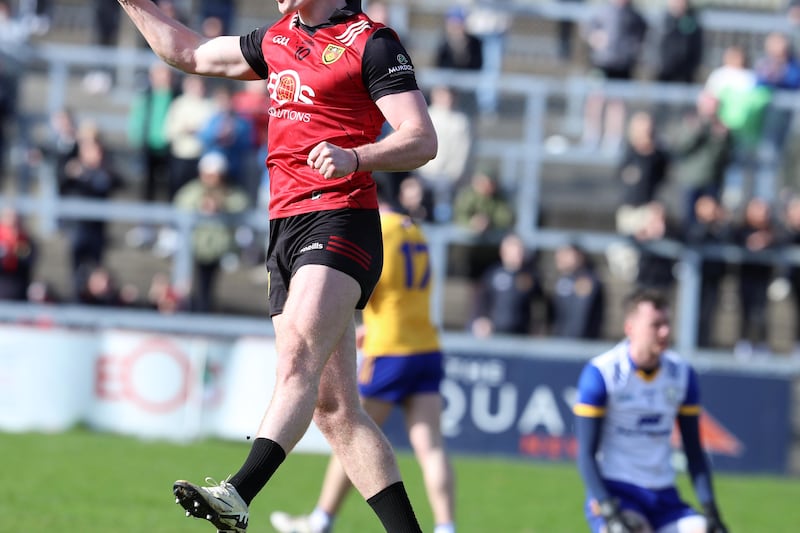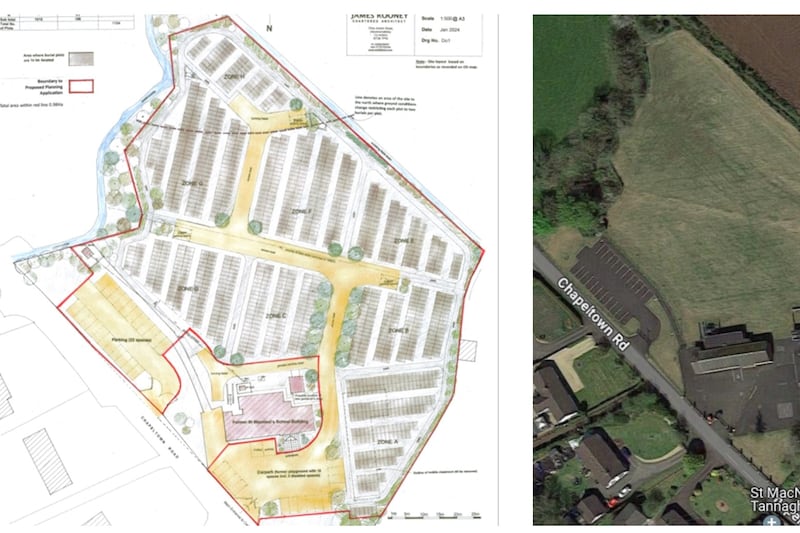WHILE it was the £1million figure that collected all the attention after Friday’s ‘Gaelfast’ launch, it was a different figure that caught my eye – six per cent.
That is the approximate current level of participation in Gaelic Games by primary school children in Belfast. And given what we already know about the nationwide trend of players dropping off in huge numbers in their late teens and early 20s, it offers a stark insight into the scale of the problem.
It would, of course, be unfair to suggest that Belfast is the only urban population centre in which the GAA struggles for traction. You only have to go through the handful of cities we have in the north for proof.
It has a particularly weak presence in Derry, where only Steelstown, a top-end intermediate side, have escaped the clutches of junior football consistently in the last decade.
No club from Newry has reached a Down county final since 1968 and the Mitchel’s club, which produced the likes of Sean O’Neill, Kevin O’Neill and Val Kane, are in Division Four of the football league.
The strength of the two clubs in Armagh city, namely reigning county champions Armagh Harps and Pearse Óg, masks the fact that there are only those two clubs and hurling-only outfit Cuchullains servicing a city of 15,000 people.
The GAA’s roots have traditionally been strongest in rural Ireland and despite the migration of so much of our young population towards urban areas, that doesn’t appear to be changing.
Dublin are, of course, the major exception to the rule. And yes, money has had a major influence. But their policies in terms of how they’ve invested that capital have been just as significant a factor.
“The intelligent thing that Dublin GAA did is invest in people. And that’s what they are doing,” said Jim Gavin in February 2016.
“There is very little capital investment going on in Dublin clubs at the moment. The county board, with that funding, matches it on parity – there’s a 50:50 split.
“The bedrock of the association is volunteerism. I was out with my young fella, the under-eights and the games promotion officer was there. He was co-ordinating five coaches with the 20 kids that were there. Myself and the other guys were all volunteering our time – you need someone to co-ordinate it.
“I just think that Dublin GAA have gone about it smartly. When I’m asked by other counties I encourage them to get on to Croke Park: make their business case for funding for people.
“I was up in Longford there presenting medals a few months back. The conversation with a cup of tea afterwards was about Games Promotion Officers: they don’t have any.
“They need to put their vision to Croke Park, get a games promotion officer into Longford, into the clubs, and promote the game.”
The youth in Dublin are engaged by the Games Development Administrators that come into their schools and match the energy of enthusiasm with the base of quality coaching, drawing kids in by the hundred.
There are now over 50 GDAs employed in Dublin, which is partly down to the high levels of funding the county receives. But while half their wage is looked after centrally, the other 50 per cent is paid directly by the club that they service.
That could be the guts of £20,000 a year. Sounds like a lot, but how many clubs are squandering a figure in that region on a senior football manager that does a year or two, and is far more interested in winning rather than player development?
Some of the larger clubs have two full-time coaches. They coach the players, they coach the other coaches and, as former Kerry footballer Mike Quirke put it, “they’re getting them [the kids] hooked.”
Dublin clubs have led the GAA into the era of self-help. There is no reason why Antrim cannot get its house in order and follow down that path, but only if the clubs take heed and examine the possibility of tracing the path already forged.
In the long run, the clubs are going to have to seriously evaluate what they are doing, and how they are investing their money. The county board is not cash rich but if the figures being quoted on the club circuit are to be believed, there is enough to get by just as well as any other county.
This money is a start and it will help. In the situation Antrim finds itself in, even in spite of the angst over Casement Park’s debilitation, investing in coaching is vastly more beneficial than investing in concrete.
But again, just look down the motorway at Dublin. Their participation levels are continuing to grow despite the absolute dearth of facilities in some areas.
Success, and being part of a vibrant sporting organisation, is every bit as attractive to those lads playing on council pitches at half 10 every Sunday morning as the idea of a shiny new clubhouse is.
The absence of Casement Park is not ideal but it seems to have become a crutch for Antrim’s failure of late, repeated ad nauseum until it inevitably seeps into impressionable minds.
The issue of the funding levels does come into play when it comes to the quality and depth of coaching, of course.
The maths is quite simple. £1m over five years is £200,000 a year for Antrim.
A Regeneration Manager – for whom the job specification reads eerily close to the GAA’s original flawed assessment of what would make a good Director General - will be hired at a cost of around £60,000 per year.
The other £140,000 will pay for four or five coaches, depending on what the wages end up looking like. It’s understood that they will be better paid than Ulster GAA coaches in a bid to keep them from ‘stepping up’ during the five-year cycle.
This £1m will effectively pay the wages of five or six people for five years, and only that. No concrete, no grass, no equipment.
So it is not going to solve Antrim’s problems on its own. Far from it.
The incumbent county board have done good work in the last few years but these are the kind of small problems they face by the dozen, which build up to become the major cracks in their structural plans.
£1million is a drop in the ocean when the obstacles are so many and the solutions are so few.
A strategic plan for the next three years is in the process of being drawn up and is due for release later this year, but unless it attempts to light up the steps to success in bright neon and the clubs are willing to go down that road, then Antrim will remain the dark.
